Swollen Uvula
What is Uvula?
What does it mean when your uvula is swollen ?
Uvula is a fleshy hanging structure, which is seen at the back of mouth and is a part of the soft palate [1]. When you feel the roof of the mouth with your tongue, the hard palate can be identified.
The hard palate continues backwards as soft palate. At the end of the soft palate a little tissue can be seen hanging. This is the uvula. It contains few muscle fibers and glands [3].
Meaning
The word ‘Uvula’ originated from Medieval Latin, and means ‘Little Grape’ [1]. It is pronounced as ‘yoo-vyuh-luh’ [2].
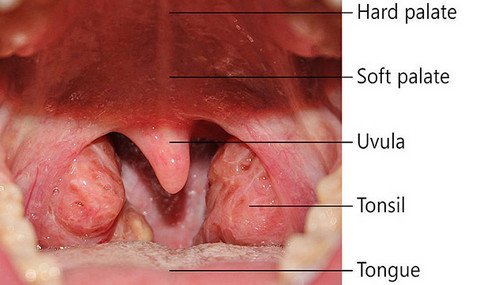
Photo 1: Image showing different structures in the mouth.
Image Source: www.healthline.com
What is the function of the Uvula?
Though the uvula looks so small and in the middle of nowhere, it has particular function during swallowing of food and in speech. It produces lots of saliva that moistens and lubricates the throat, which makes the activity of swallowing smooth [4].
Similarly, along with the help of soft palate, it closes the passage which comes down from the nasopharynx. This prevents food from entering into the nasal cavity. Certain languages like French and Arabic has particular phonetics that requires the shrill produced by the uvula. So it acts as an accessory speech organ [5].
Further, it is also seen to have lots of macrophages and T cells in the sub-epithelial layer, which helps it in being a barrier to invading organisms [3, 6].
Causes of a swollen Uvula
A swollen uvula occurs when there is inflammation of the structure. This is medically known as uvulitis. Uvulitis is known to be having many causes including infection.
The most common infection of the throat being by the bacteria Streptococcus pyogenes, it remains one of the most important causes of uvulitis [7].
Thus, broadly we can classify the causes of uvulitis into infectious and non-infectious causes[8, 9, 10, 11, 12, 13].
Infectious causes of uvulitis
- Streptococcus pyogenes- Most common cause
- Hemophilus influenzae b
- Fusobacterium
- Prevotella intermedia
- Streptococcus pneumoniae
- Candida albicans
- Mycobacterium leprae
- Viruses- Not reported or proved yet.
Non-infectious causes
- Trauma to uvula – during surgery or emergency procedures such as airway intubation.
- Inhalation of irritants- Smoking, cannabis.
- Vasculitis- Kawasaki disease
- Allergic reactions
- Hereditary angioneurotic oedema
- Dehydration- dehydration causes the uvula to become dry and irritated.
- This can lead to its swelling.
- Alcohol- Alcohol abuse can lead to dehydration and thus uvulitis.
- Snoring- Individuals who snore usually keeps their mouth open. This results in dryness of the throat including uvula.
Symptoms of swollen Uvula
The symptoms and signs of uvulitis depend upon its cause. Generally in infectious causes fever and sore throat is common. Similarly, it is uncommon for respiratory obstruction to occur, in infectious conditions. The usual symptoms of uvulitis include
- Fever
- Sore throat
- Difficulty in swallowing
- Excessive drooling
- Difficulty in breathing
- Gagging sensation [13, 14, 15, 16]
On examination, red and swollen uvula may be seen. Pus, spots or ulcers can be present on the uvula, depending on the cause. Associated tonsillitis or pharyngitis may be seen.
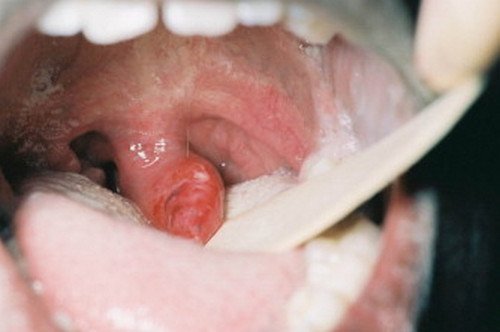
Image 2: Image of a swollen uvula being examined.
Photo Source: ars.els-cdn.com
Diagnosis
The diagnosis of uvulitis is chiefly by clinical examination and history. In certain cases laboratory diagnosis or radiological support may be required. The following tests help in pin pointing or excluding the diagnosis[17, 18, 19, 20].
- Complete blood count may show raised White blood cells count and ESR in cases of infectious causes.
- Eosinophil count may rise in allergies.
- Blood culture- to diagnose infective organism
- Swab taken from uvula for culture.
- X-ray of neck in lateral position
- CT scan with contrast of the neck.
Differential diagnosis of swollen uvula (pictures)
Certain conditions may be confused with uvulitis because of its presentation. A detailed evaluation with appropriate investigations can confirm the diagnosis[7].
- Epiglottitis- Epiglottitis presents with similar features of uvulitis, but usually airway obstruction is present, which is absent in infectious uvulitis.
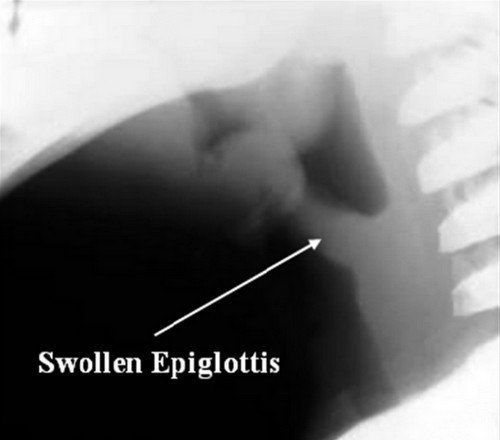
Picture 3: An X-ray of the neck, from the sides, can help in visualizing an enlarged epiglottis.
Photo Source: pedsinreview.aappublications.org
- Retropharyngeal abscess- This presents with severe pain with swallowing, inability to extend the neck and inability to open the mouth wide. It can be confirmed by a CT scan of the neck.
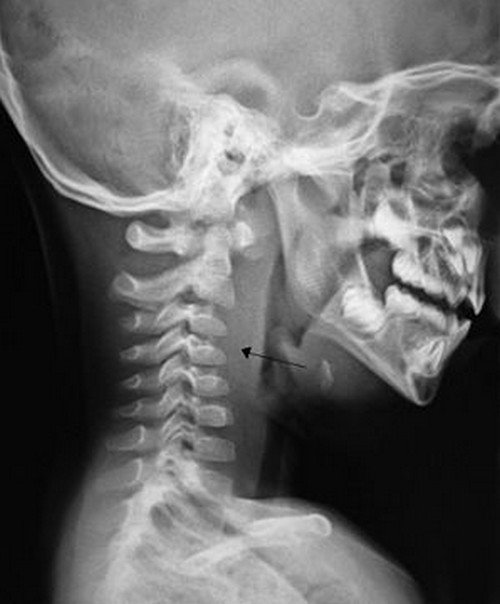
Photo 4: X-ray of the neck, showing soft tissue swelling (arrow) due to retropharyngeal abscess.
Image Source: upload.wikimedia.org
- Peritonsillar abscess- Though the symptoms of uvulitis may be present in such cases, on examination, the tonsils can be seen enlarged and inflamed with an obvious abscess near its upper pole.
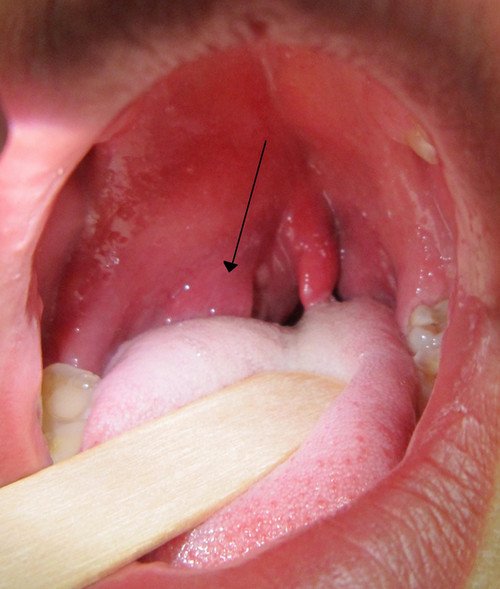
Image 5: Image showing Peritonsillar abscess of the right side (arrow).
Picture Source: PeritonsilarAbsess.jpg
- Angioedema- Eosinophil count may be elevated. In hereditary angioneurotic oedema, complement C4 may be low.
- Viral rashes- Examination of oral cavity can show the viral disease related rash in the mouth, such as in case of Hand Foot and Mouth disease caused by Coxsackie virus.
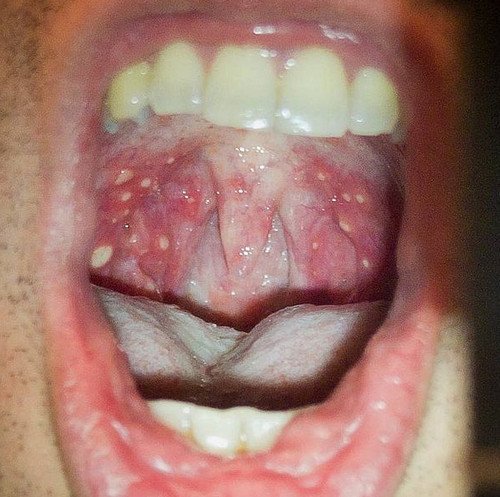
Image 6: Rashes due to Hand Foot and Mouth disease can be seen in the mouth.
Photo Source: outbreaknewstoday.com
- Severe pharyngitis- Pharyngitis will show the symptoms of redness and inflammation in the pharynx. Pus formation or petechiae in the pharynx may also be observed.
Treatment
Treatment of uvulitis is based on the cause of the condition. In cases of infectious uvulitis, antibiotic therapy will be required. In non-infectious uvulitis, avoiding the irritant causes, and drugs such as corticosteroids and anti-histamines should be enough.
Supportive treatment to maintain the airway may be required when uvulitis is accompanied by epiglottitis. A mouth guard or C-PAP device can help people who suffer from snoring[7, 13].
Surgery
Uvulitis generally does not require surgical removal. Uvulectomy (surgical removal of uvula) is usually done in extreme conditions such as cancer of the uvula [21]. It may also be done in people suffering from snoring due non obstructive sleep apnoea, whose uvula is the cause of the condition [22].
Home remedies for swollen uvula
In mild cases of uvulitis, or in cases where individual is undergoing treatment, few techniques can help in reducing the symptoms[13].
- Boost your immunity with fresh fruits and vegetables
- Drink plenty of fluids to keep well hydrated.
- Gargle using warm water with salt.
- Honey and ginger can sooth the throat.
- Ginger tea may help by acting as a natural anti-inflammatory food.
- Avoid smoking.
- Avoid allergens.
Reference:
- “uvula”. Collins English Dictionary – Complete & Unabridged 10th Edition. HarperCollins Publishers. 17 Nov. 2017. <Dictionary.com http://www.dictionary.com/browse/uvula>.
- “uvula”. Dictionary.com Unabridged. Random House, Inc. 17 Nov. 2017. <Dictionary.com http://www.dictionary.com/browse/uvula>.
- https://en.wikipedia.org/wiki/Palatine_uvula
- Back, GW; Nadig, S; Uppal, S; Coatesworth, AP (December 2004).Clinical otolaryngology and allied sciences. 29 (6): 689–93.
- Finkelstein Y, Meshorer A, Talmi Y, Zohar Y, Brenner J, Gal R (1992). 107 (3): 444–50
- Olofsson K, Hellström S, Hammarström ML. Human uvula: Ann Otol Rhinol Laryngol 2000; 109:488
- https://www.uptodate.com/contents/uvulitis-clinical-features-and-treatment?source=contentShare&csi=97ec4ed4-9d07-4cf7-887f-df767d556572 and webmd
- https://www.uptodate.com/contents/image?imageKey=PEDS%2F82234&topicKey=PEDS%2F6029&source=see_link&utdPopup=true
- Alcoceba E, et al. (2010). https://www.ncbi.nlm.nih.gov/pubmed/20232778
- Allergens. (n.d.). https://www.foodallergy.org/allergens
- Craig T, et al. (2012). DOI: https://dx.doi.org/10.1097%2FWOX.0b013e318279affa
- Hereditary angioedema (HAE): Get to know the disease. (n.d.). http://www.haea.org/what-is-hae/
- https://www.belmarrahealth.com/swollen-uvula-causes-and-symptoms-treating-uvulitis-with-natural-home-remedies/
- Wald ER. Uvulitis. Textbook of Pediatric Infectious Diseases, 7th, Cherry JD, Harrison GJ, Kaplan SL, et al (Eds), Elsevier Saunders, Philadelphia 2014. p.165.
- Kotloff KL, Wald ER. Uvulitis in children. Pediatr Infect Dis 1983; 2:392.
- McNamara RM. Clinical characteristics of acute uvulitis. Am J Emerg Med 1994; 12:51.
- Westerman EL, Hutton JP. Arch Otolaryngol Head Neck Surg 1986; 112:448.
- Rapkin RH. Simultaneous uvulitis and epiglottitis. JAMA 1980; 243:1843.
- McNamara R, Koobatian T. Simultaneous uvulitis and epiglottitis in adults. Am J Emerg Med 1997; 15:161.
- Jerrard DA, Olshaker J. Am J Emerg Med 1996; 14:551.
- https://emedicalhub.com/swollen-uvula-causes-symptoms-treatment-surgery-remedies/
- https://www.fauquierent.net/uvula.htm
Published on November 28th, 2017 by Editorial Team under Diseases and Conditions.
Article was last reviewed on January 12th, 2022.

